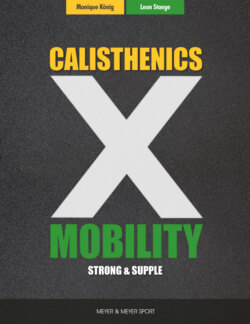Читать книгу Calisthenics X Mobility - Monique König - Страница 26
На сайте Литреса книга снята с продажи.
2.5.4 PAIN WHILE ROLLING
ОглавлениеFor most people, rolling involves pain–only when you’re in a lot of pain and can’t move your shoulder for three days does rolling work. This is also true for a lot of athletes and stretching, who think, I have to lengthen the muscle as much as possible, and it has to hurt!
While applying this mentality to mobility is a big mistake, many do exactly that: If you want to have bulging biceps, do a lot of curls. If you want strong legs for doing squats, do a lot of squats. If you want to be able to do more pull-ups, do a lot of pull-ups. But do you want to get “better” at pain? Probably not. Our bodies never stop learning. They adapt and remodel themselves as needed. You should therefore provoke pain as little as possible.
Moving pain-free applies to the healthy athlete as well as the injured one. Irritating your body with constant pain impulses isn’t beneficial to training or rehabilitation.
When you lie down on the foam roller, it can be unpleasant, but it shouldn’t end with a flood of crocodile tears. Pain-free moving is healthy moving. You can find more information in section 3.2, “Pain and Injuries.”
